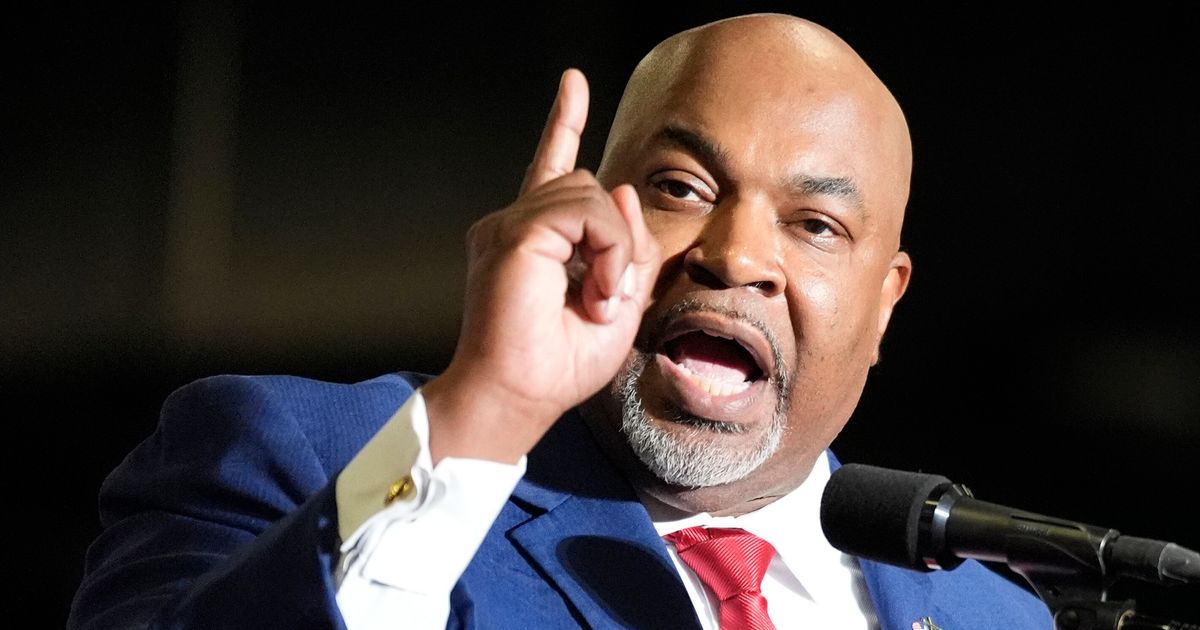It was a mild, crisp, and sunny Saturday afternoon, and the two doctors were on a mission. Flyers and stickers in hand, they made their way through the Columbus Square Park neighborhood of Kansas City, Missouri, which sits just blocks south of the winding and muddy Missouri River.
Iman Alsaden and Selina Sandoval, respectively the chief medical director and associate medical director of Planned Parenthood Great Plains, were among the 50 or so volunteers spread out across Kansas City on October 26 as part of a coordinated get-out-the-vote effort in support of the state’s proposed Amendment 3. The measure seeks to undo Missouri’s total abortion ban that took effect less than an hour after the U.S. Supreme Court issued its Dobbs v. Jackson Women’s Health Organization decision in June 2022. With just 10 days to go until Election Day, similar efforts were also underway in St. Louis and Columbia, home to the University of Missouri’s flagship campus.
Alsaden looked down at an app on her phone as the pair approached a tall brick home. A 56-year-old female voter named Mary lived there, according to the app, Alsaden reported, and she hadn’t yet voted. “Oh, I like this for us!” Sandoval said. Mary wasn’t home, and Sandoval slipped a flyer in support of the amendment on the doorknob.
Missouri is one of 10 states with abortion rights initiatives on the ballot this November. And, according to polls, support for Missouri’s amendment is strong: A September Emerson College Polling/The Hill survey of state voters, for example, revealed that 58 percent planned to vote for the measure.
The Yes on 3 campaign, backed by a coalition of groups under the banner Missourians for Constitutional Freedomhas been aggressive. The coalition has raised more than $30 million — far outpacing groups urging a “no” vote on the amendment. And while the campaign has received some large donations and in-kind support from individuals and organizations across the country, its campaign finance reports reflect that the effort has been fueled by thousands of small donations, a seeming testament to a vigorous text-messaging campaign. Its most recent quarterly finance report, for examplewas nearly 1,700 pages long.
In contrast, groups advocating for keeping the ban in place — Vote No on 3 and Missouri Stands with Women — have struggleddespite the efforts of their political allies to keep the measure off the ballot, including a failed lawsuit to stop it. As of late October, those groups had raised about $2 million, which includes a more than $150,000 infusion of late cash from D. John Sauer, a former Missouri solicitor general and a member of Donald Trump’s legal team.
Photo: Jordan Smith/The Intercept
The energy of the campaign was palpable as Alsaden and Sandoval knocked on doors, even though there weren’t many voters home along their route. At one stop, Sandoval asked a man who opened the door whether he’d voted yet. “Yes,” he replied. “Did you vote ‘yes’ on Amendment 3 to get rid of the Missouri abortion ban?” she followed up. “Sure did!” he replied. “Ooh! Love it!” Sandoval said. “Wooo!” the man replied, taking a few stickers that signal support for the amendment.
The stakes couldn’t be more clear. If Yes on 3 can get voters to the polls, the campaign is likely to win — and Missouri would be the first state in the country to overturn a total abortion ban in the wake of Dobbs.
The Trigger Ban
The ink had not yet dried on the Supreme Court’s Dobbs decision on June 24, 2022, when Missouri’s then-attorney general, Eric Schmitt, hit send on a four-page opinion addressed to the state’s Revisor of Statutes. Schmitt, who is now a U.S. senator, confirmed that the court had shredded the constitutional protection for abortion, freeing Missouri to end legal abortion in the state. “This opinion immediately restores Missouri’s deeply rooted history and proud tradition of respecting, protecting, and promoting the life of the unborn,” Schmitt wrote.
In a subsequent press release, Schmitt crowed that the state would go down as the first to officially, fully strip millions of residents of their reproductive autonomy. “My Office has been fighting to uphold the sanctity of life since I became attorney general,” he said, “culminating in today’s momentous court ruling.”
Practically speaking, the right to abortion in the state was already thin. The increasingly conservative legislature had spent more than a decade stripping away reproductive rights. By the time lawmakers passed the trigger bill in 2019 that would allow Schmitt to decree abortion rights dead, the state had just one clinic, a Planned Parenthood in St. Louis, left to provide services. Missouri’s draconian laws had already seen thousands of residents slip across the state’s borders for care, including to Illinois — separated from Missouri by a three-tenths-of-a-mile strip of the Missouri River — where lawmakers, providers, and advocates had been diligently increasing access to reproductive care.
In 2010, for example, Missouri recorded 6,163 abortions performed in state; by 2021, that number had dwindled to just 150.
Still, the state’s abortion ban — which contains only a vague exception for medical emergencies and no exceptions for rape or incest victims — began wreaking havoc almost immediately. A hospital system based in Kansas City, citing ambiguity in the lawstopped providing emergency contraceptives just days after it took effect, causing widespread uproar and prompting both Schmitt and Gov. Mike Parson to claim the hospital system was in the wrong and that emergency contraceptives were not banned.
Then in August 2022, scary headlines raced across the state when a woman from Joplin named Mylissa Farmer was denied an emergency abortion at a Missouri hospital after her water had broken early. Although doctors determined that the chance of her fetus surviving was zero, hospital officials determined she simply wasn’t yet sick enough to qualify for the exception to the state’s abortion ban. Farmer finally got the abortion she needed in Illinois.
Across the country since the Dobbs decision, pregnant people with life-threatening emergencies have hit a statutory wall, highlighting the cruelty of abortion bans — and the fundamental nonsense of allowing politicians to play doctor via state statute. Since 2022, voters in six states have either fought off efforts to do away with abortion protections — the first such vote was in Kansas in August 2022 — or have passed laws to codify protections for reproductive health care, including in Ohio. There, nearly 60 percent of voters in 2023 approved adding a measure to the state’s constitution protecting the right to abortion.
Not Far Enough
The Missouri amendment is not without controversy — from inside the reproductive justice movement. Like most initiatives appearing on ballots this fallMissouri’s abortion amendment essentially codifies the protections outlined in the Supreme Court’s 1973 decision in Roe v. Wade. The landmark case and its progeny protected individual freedom only to the point of fetal viability, at which point it allowed for restrictions on abortion access.
Fetal viability is typically described at the point at which a fetus can survive outside the womb, but it is a tricky thing to pin down, let alone to mandate, given that every pregnancy is different.
For some advocates, the problem with Roe — and with the abortion initiatives that mimic its protections — is that it did not bar the government from intruding on individual rights, it only set up a scheme for when the government could stick its head into the examination room. And that, critics say, gives Missouri lawmakers who vehemently detest reproductive autonomy too much leeway to chip away at the amendment’s protections — just as they’ve done in the past.
Some have argued that Missourians should have held off collecting signatures to get the citizen-led amendment onto the ballot this year and instead come up with expansive language that does away with avenues for government interference in pregnancy-related decision-making to put before voters at a later date. By voting for Amendment 3, “you will actually be embedding a ban into the state’s constitution because of the viability language,” Justice Gatson, founder and director of the Reale Justice Network told Flatlanda nonprofit newsroom at Kansas City’s PBS station.
The amendment’s authors seemingly attempted to thread that needle carefully. While the ballot provision says that the state’s general assembly “may” enact laws that “regulate the provision of abortion” after viability, it also says that “under no circumstance” may the government “deny, interfere with, delay or otherwise restrict” an abortion deemed necessary by a “treating health care professional.” It also defines fetal viability as the point in a pregnancy when a “treating health care profession and based on the particular facts of the case” believes that there is a “significant likelihood” of a fetus’s “sustained survival outside the uterus without the application of extraordinary medical measures.” While it does not define what those extraordinary measures are, it does, at least on its face, define fetal viability on a case-by-case basis, presumably making it difficult for the legislature to unilaterally define it.
Should the amendment pass next week, it would take time to restore rights — and access — within the state, and advocates would likely have to sue to lift the ban currently in place. That is the way things have played out in Ohio; while voters passed the constitutional amendment in 2023, it wasn’t until October 24 of this year that a judge there permanently struck down the six-week ban on abortion that was still on the books.
In Missouri, it seems likely that each of the state’s myriad abortion restrictions would require separate legal challenges. “It will be frustrating that every single day, care is not restored,” Emily Wales, president and CEO of Planned Parenthood Great Plains, told the Kansas City Star. “Missourians’ lives are at risk, but we will be telling that to the courts who have to make these decisions, and we will do everything we can to restore access as quickly as possible.”
Meanwhile, anti-abortion lawmakers have signaled that they’re willing to fight to limit the scope of the amendment — and the will of voters — perhaps by penning a repeal measure that would appear on a future election ballot. “This is not the end all be all,” the rabidly anti-abortion Republican state Sen. Mary Elizabeth Coleman told the Missouri Independent. Coleman previously sought to pass a state law that would bar patients from traveling out of state for abortion care and fought to keep Amendment 3 off the ballot. “I think you will see efforts, win or lose, for Missourians to get another say in this.”





